Indian Tree Open Space Preserve
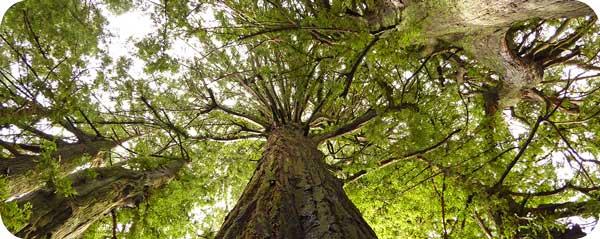
Hike to the top to enjoy a grove of seriously big redwoods.
|
Jack Gedney ~ July 3, 2017 Click here for printable pdf Novato is home to several preserves that seem to be well known among birders: Rush Creek, Mount Burdell, Stafford Lake, and the Hamilton wetlands all pop up regularly in the lists of seasonal sightings, perhaps aided by their relatively prominent public access points and often quick and easy access to patches rich with easy sightings. But if I had to choose my favorite preserve in Novato, I would be seriously tempted by Indian Tree Open Space Preserve. Obvious, prominent access? No – it’s tucked away on the edge of town. Gentle strolling on wide paths alongside bird-filled wetlands? No – most of the park is traversed only by steadily climbing singletrack trails, lending themselves more to patient solitude rather than busy activity. Rare and concentrated habitat hosting particularly unusual birds? Only on the most local scale – while it’s true that Indian Tree has the only real conifer forest in Novato, one could be very justifiably point out that richer and more extensive redwood and Douglas-fir forests are found in south and west Marin. So, from the perspective of a social, scope-bearing, species-accumulating birder who would rather not walk too far, Indian Tree has perhaps only a modest allure. But if you love quiet and uncrowded paths, find happiness in even modest forests, and value the deepening immersion of a walk into the woods more than a spectator’s seat on the mere sidelines of nature, then Indian Tree offers rewards found nowhere else in Novato. The trail begins near the end of Vineyard Road, where the pavement of civilization gives way to to a rural terminus of gravel. Although a full exploration of the preserve will take you through an alternating mosaic of different forests and woodland habitats, you are basically about to head up onto the generally north-facing slopes of a branch of Big Rock Ridge. This means that your excursion will in general be wooded; the most open and sunny habitat is this opening bit by the road and the parallel Upper Meadow Trail that heads off to your right. In summer, look aloft for swallows, in trees and the electrical lines for Allen’s hummingbirds, and among the coyote bush for families of California quail. The house neighboring the trailhead hosts a multitude of feeders that draw finches, woodland songbirds, and often large flocks of band-tailed pigeons. This chunky but swift native forest pigeon is the closest-living relative of the extinct passenger pigeon and gives a nice taste of wildness quite different from the urban flavor that the pigeon neophyte might expect from the normal prejudices associated with the name. You will very shortly arrive at a fork in the trail. The general layout of the preserve’s trails aligns with a figure eight pattern, with a lower and an upper loop (see map). Allow a few hours to complete the lower loop without rushing, or give yourself a good half a day or long morning to reach the grove of big redwoods at the 1400’ summit and properly enjoy the full double loop. Either direction is perfectly pleasant; head right to the Deer Camp fire road for a relatively spacious grove of creekside redwoods, ferns, and a few maples to quickly encounter forest birds relatively uncommon in Novato, such as Pacific wrens and breeding hermit thrushes. Both of these are prodigious singers in spring, with the wren’s song all bubbling exuberance and that of the hermit thrush a much more delicate and ethereal affair. In general, many of the trails at Indian Tree will alternate between mixed evergreen forest (live oak, black oak, buckeye, madrone, etc.), denser live oak-California bay forest, redwood forest, and – after a few hundred feet of climbing – patches of drier Douglas-fir forest. In winter, mixed species songbird flocks will travel between these different wooded habitats, interrupting periods of quiet with sudden bursts of activity from chestnut-backed chickadees, brown creepers, Townsend’s warblers, ruby-crowned kinglets, and less common golden-crowned kinglets. Another winter specialty found mostly in the denser and darker woods are varied thrushes, robin relatives who breed in moist northwestern forests and come down to our area in variable numbers from year to year. In some winters there will be very few; in most years you can find at least some here; in occasional years, the woods will be filled to overflowing with them. In early spring, the forest floor will fill with milkmaids, irises, and hound’s tongue. Juncos and orange-crowned warblers issue their trilling songs from the live oaks. The treetops conceal the purple finches and warbling vireos whose rich musical warbling fills the air. Darker forest passages might be enlivened by the high-pitched whistled tracery of brown creepers or the rising zhreee! of pine siskins, an uncommon breeding bird in inland parts of Marin. You may or may not succeed in spotting some of these canopy singers, but a morning listening to the early morning chorus in a mixed wood like this is an invigorating experience even when you can’t recognize all the singers. See the birds you can; identify the ones you know; but don’t forget to enjoy the sonic spectacle on its fundamental auditory level. As you continue on the Big Trees trail above the central junction of the figure eight, you will notice a change in the forest type as Douglas-Firs become more prominent and coffeeberry begins to fill in the understory. Remember to look down as well as up: newts and banana slugs cross your trail at regular intervals. You will also pass through a brief patch of manzanita and chamise chaparral; look here for Allen’s hummingbirds and the thrilling climbs-and-dives of displaying Anna’s hummingbirds. The suddenly expansive views from this hillside patch of lower vegetation will also regularly reveal the local raptors; in addition to the ubiquitous turkey vultures, you might see red-tailed, red-shouldered, or Cooper’s hawks soaring above the trees, all visible from this 40 yard stretch of trail. As you approach the final ascent on the Big Trees trail, look for pileated woodpeckers in the live oak dominated area of mixed evergreen forest you walk through. After you climb through a final group of redwoods and huckleberry, you will emerge from the trees to meet the Indian Tree Fire Road. Follow the road briefly to the left, then take the side trail that breaks off to your right to visit the crowning grove of three big redwoods, along with their smaller cousins. Next to this little grove are a few logs placed for your relaxation as you enjoy the view: the slopes of Mt. Burdell tumble down in the foreground, with a panorama of Novato from Rush Creek to Vintage Oaks spreading out beyond. Practical DetailsHow to Get There: Indian Tree is located at the end of Vineyard Rd in western Novato. From Hwy 101, take the exit for San Marin Dr west 2.7 miles. San Marin Dr turns into Sutro Ave at Novato Blvd. Follow Sutro Ave 1 mile, turn right at Vineyard Rd and follow 1 mile until the paved road turns to gravel. For GPS, you can use the address 3425 Vineyard Rd, which is the last house before the trailhead. Don’t park in their driveway. Rules & Access: Indian Tree is a Marin County Open Space Preserve and so is open to free public access 24 hours a day, but lacks amenities like restrooms or tables. Leashed dogs are permitted on trails. As with all Open Space Preserves, excellent downloadable maps are available at marincountyparks.org or you can consult our favorite printed map, Trails of Northeast Marin by Pease Press. - Return to Birding Sites Homepage - |
Band-tailed Pigeon Photo by Doug Greenberg |
|
Photo by Jacob McGinnis |
|
|
Hermit Thrush Photo by Gary Leavens |
|
|
Varied Thrush |
|
|
Orange-crowned Warbler Photo by Teddy Llovet |
|
|
|
|
|
|


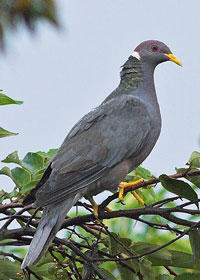
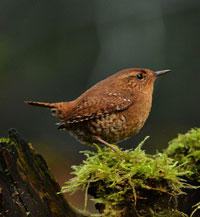 Pacific Wren
Pacific Wren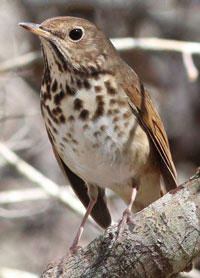
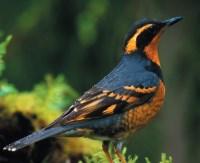
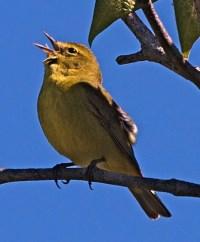
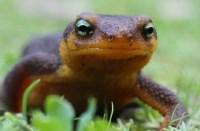 California Newt
California Newt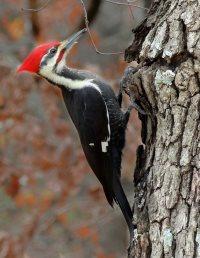 Pileated Woodpecker by Joshlaymon
Pileated Woodpecker by Joshlaymon